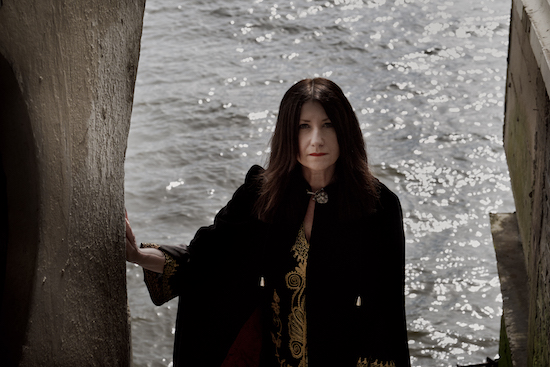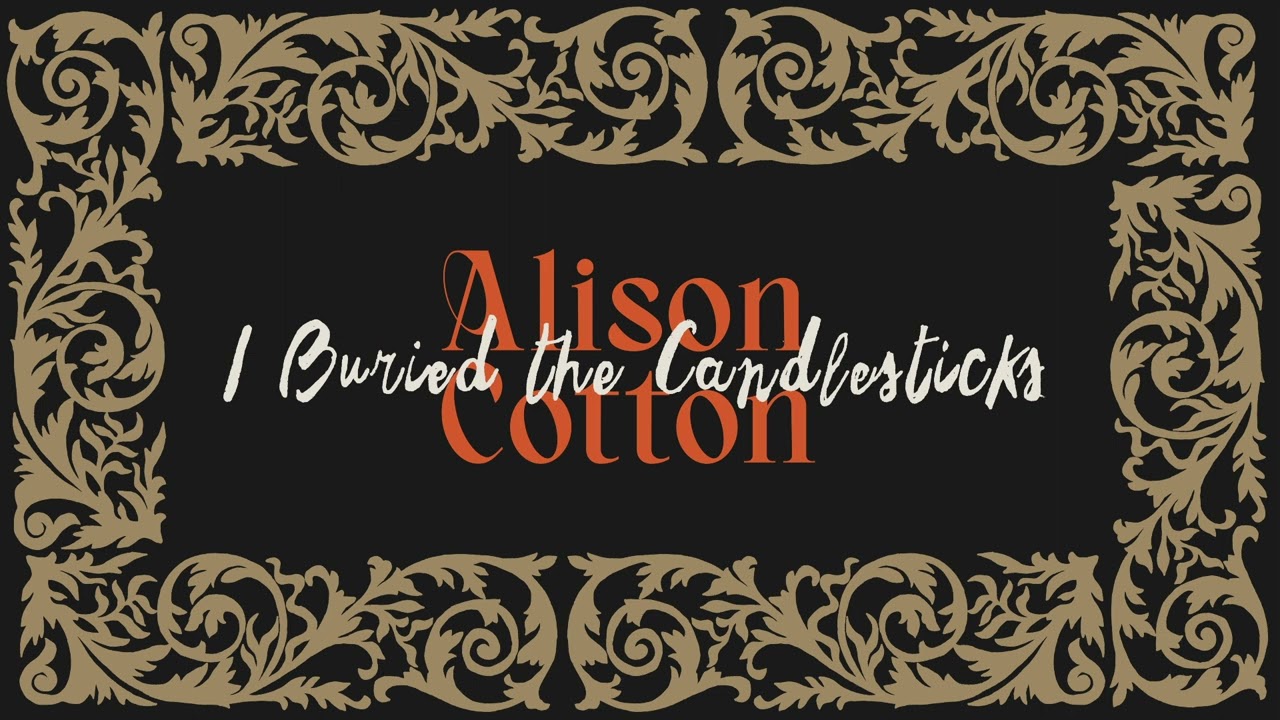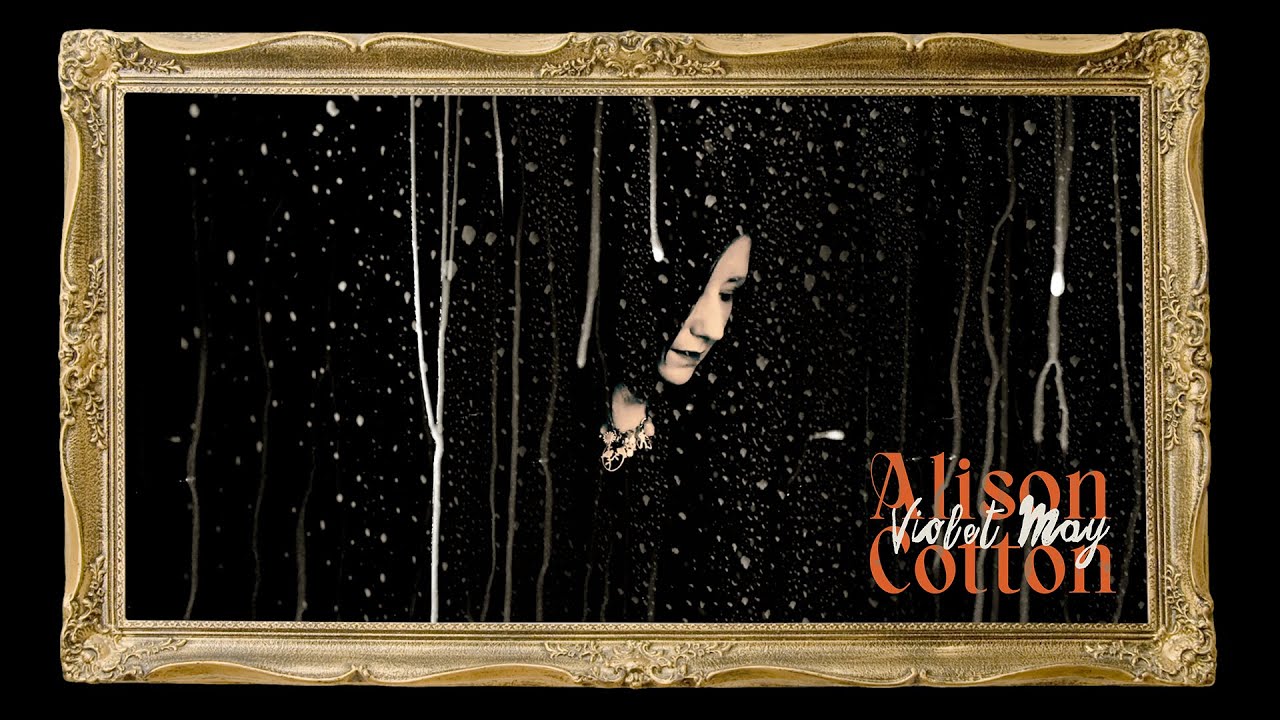ALison Cotton. Photo: Al Overdrive
Alison Cotton, when not playing alongside her partner, Mark Nicholas in indie-folk band The Left Outsides, makes a peculiar brand of folk-inspired, mostly instrumental music that defies classification. It is peculiar in the literal sense, in that it could only be her, but also in the way it belongs to the outside, coming from a world beyond. Her previous solo records, All is Quiet at the Ancient Theatre and Only Darkness Now conjure times, places and worlds as though engaging in musical sorcery, working rituals, re-enacting vanished events and generally sounding as though they are being broadcast from behind a gauze curtain which separates us from the beyond. It is music as seance, played as though the composer is a vessel for voices which have no other way to reach us.
The Portrait You Painted continues along this unnerving path. Produced by Mark Nicholas, who was also responsible for the sound on Cotton’s previous solo work, the new album is just as stripped back, incantatory and strange. Tracks are, with one exception, wordless and feature layered sounds based around her viola and her voice, both of which are deeply resonant instruments. Some tell specific histories, as though the contact of bow on string can dial up other eras. Cotton is from the North East, and three tracks relate to events in the region’s history. ‘The Last Wooden Ship’, the longest track on the album, is inspired by Sunderland’s shipyards. It is full of echoes, and harmonium playing that sounds like a hymn at half speed. The atmosphere is thick with activity, movement, water and men, but thick like the ghost of a lost world, parading past us in slow motion. ‘The Tunnel Underground Seemed Neverending’ concerns the mines of Northumberland It’s a subterranean piece. Droning viola echoes off tunnel walls, and Cotton’s eerie calls reach us from somewhere a long way beneath the earth. The ghosts of the miners are out there, but it is a lament for those who lived their lives while already buried.
‘17th November 1962’ references the Seaham disaster, an event forgotten outside County Durham. The Seaham lifeboat, the George Elmy, went to the rescue of a fishing boat called Economy, in trouble just off the coast in a rising gale. The lifeboat took all five crew off the Economy, but capsized thirty feet short of the harbour entrance at Seaham. Only one man escaped: the five lifeboat crew and the four fishing crew, one of whom was a nine-year old boy, all drowned. The viola groans like the timbers of a vessel under strain, a bell sounds a vain warning, and Cotton’s layered vocals sweep through like a wild wind. The piece is a vision that forces its way through from the other side, as the pain of those who died seeks expression and acknowledgment. Cotton’s composition provides that acknowledgment, reimagining a defining disaster as a living memorial.
The album’s icy centrepiece is ‘Violet May’. It could be a cover of a traditional song, and is the only track on which Cotton sings in the traditional sense. It tells a story in a second person voice which, it becomes apparent, belongs to a lost lover. It concerns a Rapunzel-style figure locked in a tower, in a dress her mother gave her “when she left”. Such stories usually end with the trapped woman being happily rescued, but this is different. Violet May will never meet the narrator again, his letters were in vain, and she will stay in her tower “up six flights of stairs” gazing through the oriel window. She is an artist who has locked herself from the world to paint. He hangs on just in case she wakes from her ‘trance’, but the song does not offer much hope.
Cotton was apparently inspired to write it by a visit to Sissinghurst Castle, former home to writer and gardener Vita Sackville-West, the kind of place where artistic isolation seems seductive. It is a song of the utmost desolation, encapsulated in the ultra-spare production: just Cotton’s voice, a bell that announces lines like a funeral knell, and a stark viola that accompanies her, falling silent between verses as she does. The character of Cotton’s singing is solemn, clear as the accompanying bell, and entirely captivating. Vocals and violin play dissonant harmonies with one another, at times almost painful to hear, underlining the most painful moments of the song. It is a modern folk masterpiece that sounds unlike anyone else exploring this repertoire.
The remaining two tracks, while less specific to events and locations, are equally steeped in place. ‘Murmurations on the Moor’, the short opener, consists of overlapping vocal lines, which call through what must surely be a fog, luring travellers towards them and sounding a warning at the same time. ‘I Buried the Candlesticks’ has the medieval trance atmosphere for which All is Quiet at the Ancient Theatre was particularly notable. A keening viola spills over “a thick carpet harmonium”, while a triple beat on a muffled drum sounds like an army approaching from a distance. It takes you directly into a world that seems entirely real.
The Portrait You Painted Of Me more than meets the exceptionally high standards Alison Cotton has set for herself. Her work can be compared to conceptual art, consisting of pieces that seem complete in themselves but acquire a whole new meaning when their purpose is explained. If this makes her music sound dry, it is anything but. She expresses visceral emotions through her viola, which cries in sympathy, whispers secrets, and groans in pain. Her voice has epic qualities, rising to fill a vast soundscape on ‘The Last Wooden Ship’ and closing in with the walls on ‘The Tunnel Underground Seemed Neverending’. Her music is also psychedelic, both because it sounds incredibly trippy, but more specifically because it uses a distorted perception by gazing at the present and seeing only the past beneath it. Precise definitions seem important in pinning down work that is meticulous and crafted, as well as enveloping and beautiful. Cotton’s talent is special, and her latest music will send you to places you never knew existed. The only problem will be finding a way back.




